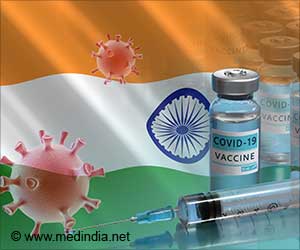An association between abnormal blood clotting and reduced exercise capacity in people with long COVID offers important new insight into the long-term effects.

‘The blood clotting abnormality was four times more likely in those experiencing difficulties with basic exercise more than 12 weeks after their COVID-19 infection (long COVID).’





Advertisement
What Does Long COVID Mean?
Long COVID (also known as Post-COVID Syndrome), a condition that occurs in people previously infected with COVID-19, results in symptoms that persist months after the initial onset of infection. Common symptoms include fatigue, chest pain, shortness of breath, and brain fog
. One study estimates that up to half of all people who recover from infection continue to experience lingering symptoms. Since long COVID is an emerging condition, its biological basis is not fully understood. This new study provides insight into the underlying medical mechanisms, such as damage to cells that line blood vessels, of the disease.“By definition, this syndrome occurs when one experiences COVID-related symptoms long after the onset of infection that we can’t attribute to any other cause or diagnosis,” explained study author Nithya Prasannan at the University College London Hospital.
Advertisement
What’s Abnormal in Blood Clotting?
To conduct this study, researchers assessed people in an outpatient Post-COVID clinic between July 2020 and May 2021. Participants were said to have long COVID if they experienced symptoms three months after the onset of their original COVID-19 infection and if those symptoms persisted for at least two additional months — in the absence of other contributing diagnoses.They measured abnormal blood clotting markers by assessing the relative levels of two proteins in the body. They analyzed the ratio of Von Willebrand factor (VWF), a protein important in blood clotting, to ADAMTS13, a protein that cuts or splices VWF to prevent it from clogging blood vessels.
If this ratio was raised, meaning that there was significantly more VWF than ADAMTS13 in the bloodstream, scientists characterized patients as being in a pro-thrombotic state, meaning that they could face a greater risk of developing blood clots.
Participants also completed exercise tests, performing timed activities such as walking on a flat surface and/or repeatedly going from sitting to standing position from a chair while wearing oxygen monitors.
Later, measured oxygen levels and tested participants’ blood before and after exercise to measure their lactate levels, which helped describe participant response to exertion.
Advertisement
Exercise is Not Easy in Long COVID
During exercise, the body converts glucose (sugar) into energy using oxygen. However, when oxygen levels are depleted, the body starts producing lactate instead, which can be turned into energy without oxygen.In the study, patients who exhibited a significant decrease in oxygen levels (measured by a sensor on the patient’s finger) while exercising and/or a rise in lactate afterward were said to demonstrate an impaired exercise capacity.
Notably, patients with raised levels of blood clotting markers were also four times more likely to have an impaired exercise capacity.
In the future, researchers aim to assess patient bloodwork using different research platforms throughout their long COVID illness to assess how their risk of thrombosis might change with the progression of their symptoms.
This additional monitoring could not only help confirm possible mechanisms underlying long COVID but also offer insight into the effects of potential treatment options for the condition.
Source-Medindia















